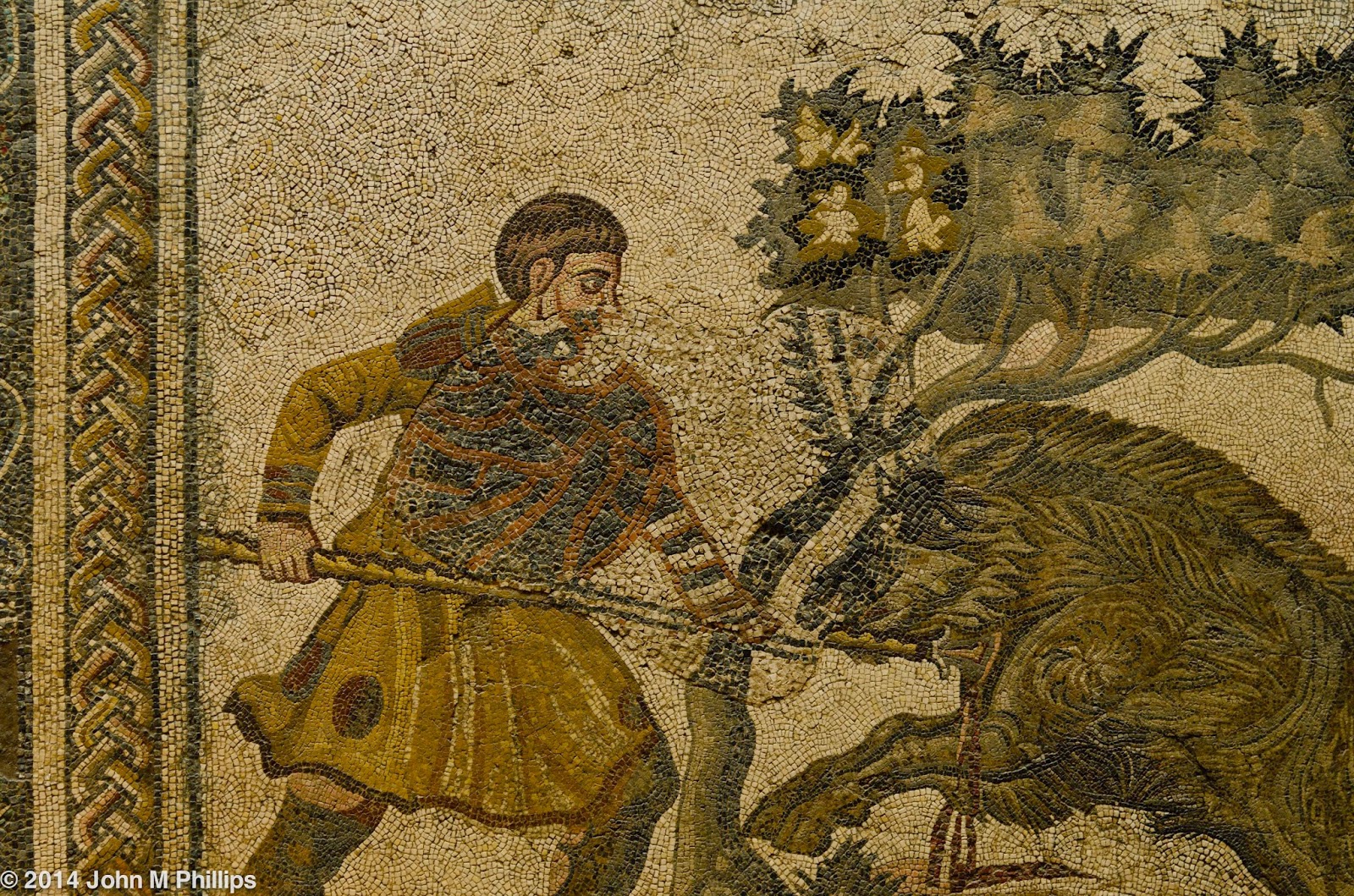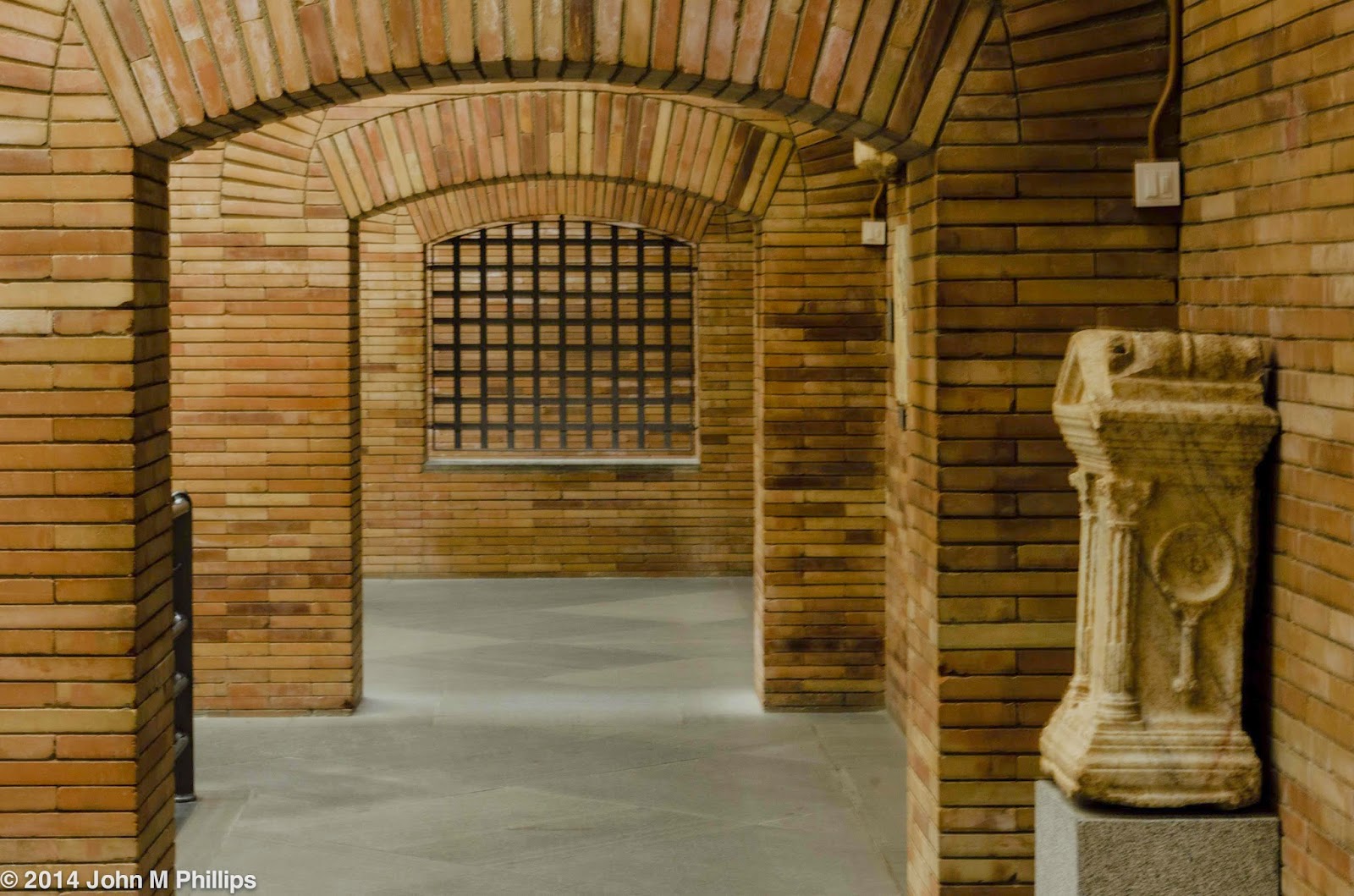If there were any criticism, it might be that the building's exterior is not as dramatic as its interior. Here, first, is a shot of the museum's main entrance.
OK, but it doesn't provide a real intimation of what is in store inside. The museum space consists generally of a dramatic central hall with three stories of open-ended exhibit galleries on either side. Here is a shot of that central hall.
The architect has carried the arch and stylized brickwork motif throughout, as shown in the following photos of a few of the galleries. Nice.
Each exhibit is given ample space, adding to an overall clean, uncluttered appearance. And lighting is outstanding for a museum. Moreover, the exhibits are well labelled and almost always interesting. They vary from statues to mosaics to fragments of pediments, as well as smaller artifacts.
And here is a statue of Aion-Chronos, the God of Infinite Time. The statue is not so great, but the title is certainly provocative.
I spent a good deal of time--and a vast number of shots--trying to capture the interior architecture, which proved more difficult than I had anticipated. The arches and intricate brick masonry come through in person but are more difficult to show photographically. Here are a couple of shots that worked OK, I thought.
I liked the symmetry and repetition of these shots. I also thought the railing in the first shot helped to guide the viewer's eye to the vanishing point.
Toward the end of my visit, I was able to catch a shot of the afternoon sun streaming through one of the museum's clerestory windows.
A fitting exclamation point, I thought.
John














No comments:
Post a Comment
Note: Only a member of this blog may post a comment.